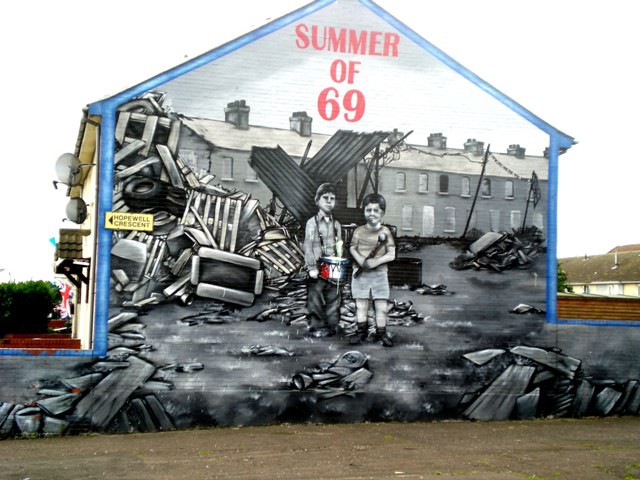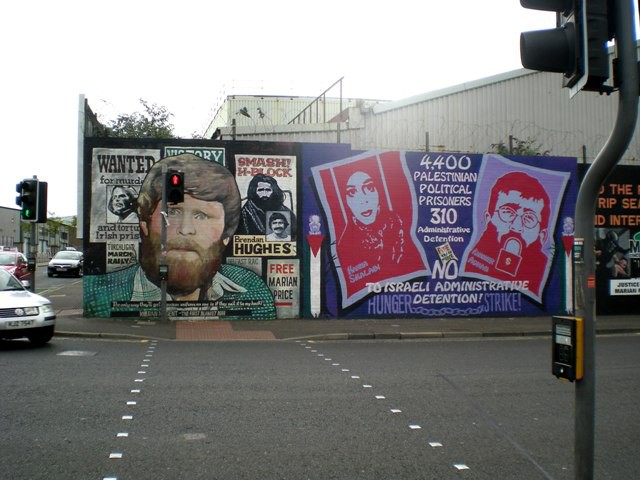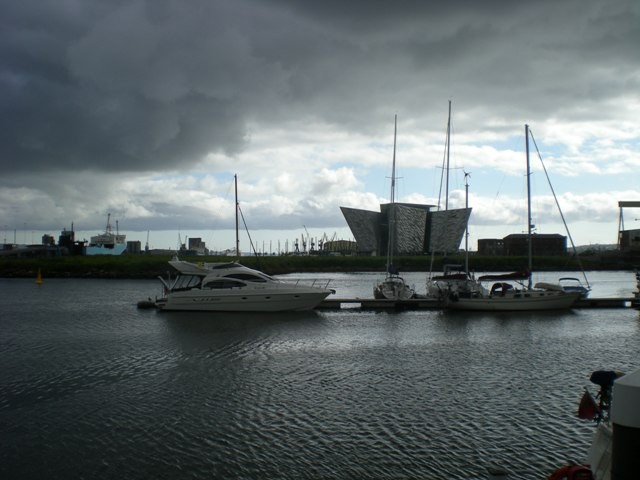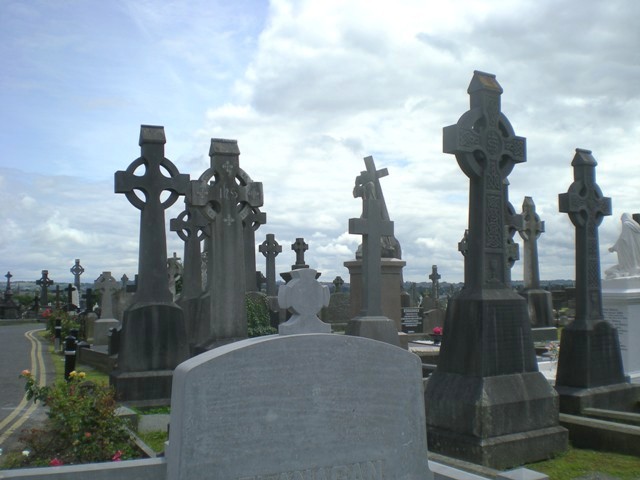
July 15
My Belfast cab drops me off at the Ulster Museum two hours before closing. This doesn’t leave me much time, but I feel the urgency of coming here. There is something about the permanence of museums and galleries that helps me to find my feet in a strange city, to get a sense of how it thinks of itself.
Ulster Museum was built in 1929. Its two-tiered columns, stone stairway and neoclassical front remind me of Bank of Montreal buildings of the same era, back home. The concrete forms of the Brutalist addition by Francis Pym jut out over the botanical garden. The ethic is proudly Irish. The institution holds a major collection of Irish art and important collections of indigenous flora and fauna. I linger by an impressive display of butterflies, as children reach over the oak rail.
I am too late to join the line-up to see the da Vinci drawings. I hurry through the other exhibits: The Sea Around Us, Saints and Scholars, contemporary art, and the gallery dedicated to the Troubles. This morning, I took the red double-decker tour bus through the neighbourhoods divided by the Peace Wall, or the Barricade as those living on either side call it. The high cement base is topped with black sheets of steel or heavy chain link that look down on the rooftops and block the sightlines to the neighbourhood opposite. The Wall was built to separate Protestant and Catholic neighbourhoods at the start of the Troubles. It was meant to be torn down after six months. Instead, it has stood for almost half a century.

By day, downtown Belfast streets are filled with shoppers, teens with skateboards hanging out by the statues, and workers on coffee break. By night, the aftermath of the Troubles is more apparent in the emptied downtown streets where British soldiers used to demand passes to anyone coming into the zone. The ten-foot thick bomb-proof wall of the court house and the hunkered, recessed public buildings give whole streets a seedy, prison-like air.
The museum panels with enlarged black-and-white photos say the spark for the conflict came from a civil rights movement in Londonderry. The Troubles began during the protests of July and August of 1969, when ten people were killed, 154 were shot and wounded, and 300 were treated for gas. Then, of course, there is Domhnach na Fola, Bloody Sunday — January 30, 1972, when British troops shot 26 protesters in Derry.
Over three decades, the conflict claimed 3,700 lives. Fifty thousand bombs were detonated; 1,820 Catholic families fled when their houses on Belfast’s Boundary Street were burned. What impresses me most about this exhibit is the courage of the writer and the truthful text that speaks to both sides without minimizing the cost, and how the museum has claimed the story in its public space.
Earlier today, the first guide on my tour bus explained the history of the Troubles as we rolled through pleasant suburbs. It wasn’t just Protestant versus Catholic, he said, it was about class. This is the Nationalist argument, but he kept his views in check. When he stepped off at the turn-around point, a new guide came aboard. She told us she wouldn’t discuss the Troubles because they touched every family, and there was no telling who might be on the bus and had loved ones injured or killed. I will hear this warning several times over the next few days.
Speakers in the ceiling announce the gallery is closing. Outside, I consider hanging out in the sunken park next door, but I’m hungry and start walking downtown to the Crown Saloon. I take a table upstairs by the window overlooking the Europa Hotel. The Europa is the most bombed hotel in Europe, having suffered 28 explosions. The five-star hotel was built on the site of the railway station. There is little now to hint of the bombings. My brother was here visiting our Belfast relatives in 2000, as the Northern Ireland Peace Accord was being negotiated. They were having a coffee together in the Europa’s restaurant when a bomb went off two blocks away and all the customers ducked, getting ready to dive under the tables if anything else happened — a second bomb or a spray of bullets.
July 16
I am waiting for my cousin’s son, Matthew, to pick me up. My hotel is located near the old Belfast docks. I can see the redevelopment from my window, the new American-looking hotels, and the icy form of the Titanic Museum inspired by the North Star. The new construction and the Museum, with it’s stunning exhibit of a virtual descent through the teeming heart of the ship under construction in Belfast dry-dock, is part of the dowry and that came with the signing of the Accord, in which the British Government promised rapid economic progress.

Cars in the UK drive on the left side of the road and I am still getting used to being a passenger with oncoming traffic whizzing past my door. Matthew and I head for the Peace Wall, which runs between Shankhill Road on the Protestant side and Falls Road, the Catholic neighbourhood. I have only met Matt once before at a wedding. He is in his early 30’s, and married with a wife and daughter. Matt is gregarious, but intense, with thinning and slightly shaggy brown under his cap. He is talkative at first, but I can see him begin to concentrate as we approach the Wall. He has the air of someone who has come through more than the usual crimes of youth. In his teens, he had to break up with his Catholic girlfriend after the two of them received serious threats from both sides. Matt grew up on Crumlin Road by the Wall. “Even us kids,” he says, almost proudly, “called it Murder Mile.” He remembers the bombings, though only as a child.
We take our time looking at the murals. Almost all of them are political. Some are shrines. We stop at pocket parks turned into memorials with flowers and plaques. The names of “soldiers” and “volunteers” are embossed in shiny bronze script on the left. The names of the victims are in columns on the right. The list of victims is always longer. Even now, shops near the Wall have steel doors rolled down over the windows, destroying any sense of the friendly street this was once, or the sidewalk as a safe public realm.
Some people want the Barricade torn down. Matt says that the people who actually live in the neighbourhoods want it to stay. They are afraid the violence will come back. The fact is that there are more than twice as many “peace walls” in Northern Ireland now than there were when the Accord was signed (22 in 1998 vs. 48 in 2012). They just aren’t the international symbol that this one has become.
My camera will stay in my backpack. It feels like an abomination to photograph the paramilitary murals and bombing sites on Shankhill Road, Goal Road, or the bullet holes, left deliberately as a reminder of disastrous stand-off in a deserted school. Even now, the sloping street in front of the boarded-up building feels like a no-go zone.
Matt slows down but he doesn’t stop as he points out the scorched circle of dirt in a partly-walled lot. Just weeks ago, Orangemen lit a bonfire here to celebrate the Battle of the Boyne in 1690, when King William defeated the deposed Catholic King James, and assured Protestant ascendency in Ireland. These huge annual bonfires are dangerous, but tolerated. Crowds of men, including some in masks and paramilitary uniforms, get drunk; they used to bring guns and shoot into the air, Matt says. They scourge earth under the fire with salt to show their determination and their resolute Protestant faith. The scorched ground and the no-man’s land of empty lots falling away from the road remind me of Goya’s Disasters of War. The etchings could not be published until 35 years after his death. His original title, handwritten on the album of proofs given to a friend, reads, Fatal consequences of Spain’s bloody war with Bonaparte, and other emphatic caprice.
Caprice: so much has been written about the Troubles that I have little to add. Great poems have been written. In his poem about the Dublin uprising against British rule, “Easter 1916,” W. B. Yeats says, “Too long a sacrifice/can make a stone of the heart.” These are the words the Museum chose to evoke events that led to the formation of the independent Republic of Ireland and Northern Ireland, and the cost of the long history that preceded the Troubles.
The memorials of the Troubles rise up to meet passers-by. They celebrate the Unionist and Nationalist histories, the Battle of the Boyne, the politicians, heroes, and martyrs. The murals of Bobby Sands and the other Maze Prison hunger strikers are well-kept. The paint is not permitted to fade. The monuments to the victims affect me the most: a seventeen-year old girl killed by a bomb blast outside a bar, mothers and husbands who fell in hails of bullets — collateral damage, as streets close to the Wall were turned into bunkers.The suspicion here lingers like an infection, visible even to a stranger like me. Fragments of a poem drift in and out of my meditation but it isn’t Irish, it’s the famous first line from Lawrence Ferlinghetti’s, A Coney Island of the Mind,
In Goya’s greatest scenes we seem to see
the people of the world
exactly at the moment when
they first attained the title of
‘suffering humanity’
Matthew has brought me to the Catholic cemetery, an orchard of Celtic crosses. He points out the graves of Nationalist volunteers and Catholic victims as I scan the green hills of Belfast in the background and the pleasant view of the city. How incongruous the nodding violets and neatly cropped grass seem with the echoes of the conflict so near: these family pictures In loving memory of those who may have taken lives, lying so close to the victims and the innocent. Matt leads me along the path to Bobby Sands’ grave. Sands lies beside his companions who died in the H-Block hunger strike. A dim outrage comes back to me as I remember the newscasts, the brutal prison conditions that spawned it, Margaret Thatcher’s bloody-mindedness, and the prisoners’ resolve as the weeks dragged on, some went blind, and their bodies gave up.

The prominence of the graves and the pristine neatness of the stones keep their history fresh. The discipline of this place is a statement. The high school photographs and private gestures of grief have been appropriated by the keepers. What a quiet space has been apportioned to these cloistered dead. I see them here — not a list names in paint, viewed from a passing bus — but one at a time, as if I knew them. The appalling thing inside these gates is not just the waste. It is the modest peace that death’s been denied, as the reckless grammar of “the struggle” and all its rhetoric follows them relentlessly into their graves.


